
Peirce Mill
District of Columbia Co. | District of Columbia | USA
Watersource: Rock Creek.
Peirce Mill
From Connecticut Avenue at Dupont Circle in Washington, D.C., go west on P St. NW toward 23rd St. NW. Just past 23rd St., turn right onto Rock Creek Parkway. Take the Parkway north bearing left on Beach Drive NW. Follow to Tilden St.NW. Turn left, cross Rock Creek, and the mill is on the right with parking available on the left. Thanks to Adam Sieminki for clearer directions.
View Larger Map

The mill is a 35'x 45' 3.5 story mill owned, restored and in operation? by the National Park Service. There is an outside overshot water wheel on the east side of the mill that is supplied with water by Rock Creek.

This last survivor of eight mills that once operated along Rock Creek was built in 1820 by Isaac Peirce, a member of a group of former Quakers that emigrated from Chester Co., Pa.
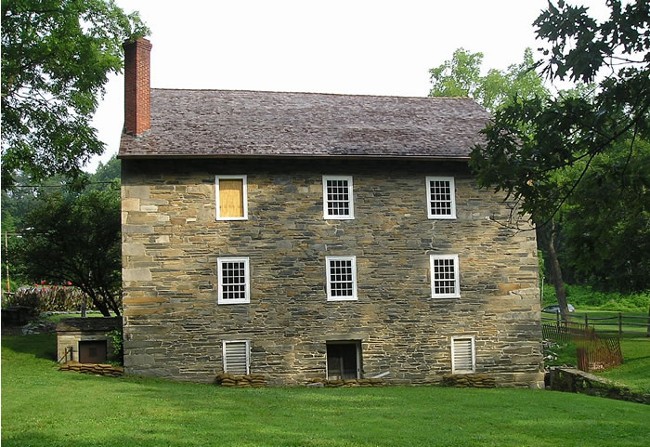
The mill was stripped of equipment and, between 1904 and 1935, was leased out as a tea room business. In 1935, the mill was restored as part of a WPA project using parts from mills in Pa. and Md. Flour was again milled through the 1940's to provide flour and meal to the many cafeterias in the D.C. area.

The mill closed for repairs in late 2002 and 2003 and may still be closed. This latest retoration will make it an operating water-powered 19th century mill once again for visitors to experience. Check the official web site located at the top of this page for details.
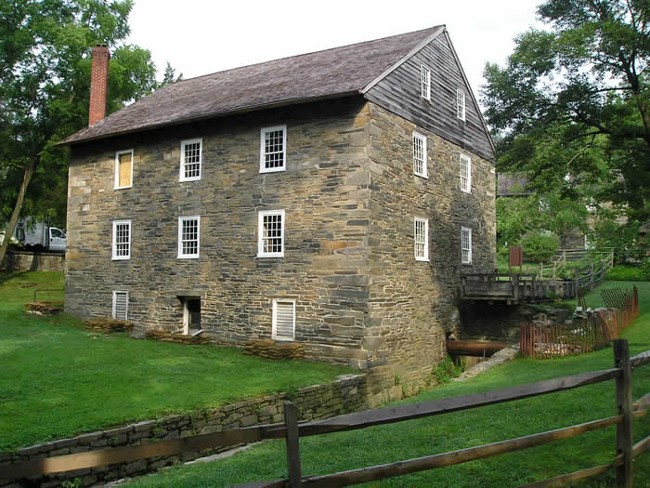
The estate once covered almost 2,000 acres and consisted of many more structures. The mill operated up to 1897, when much of the wooden gearing, wheel, shafts,etc just wore out. The wheel and axle had worn out or mostly rotted away again by about 2003. The new waterwheel axle is visible in the above photo
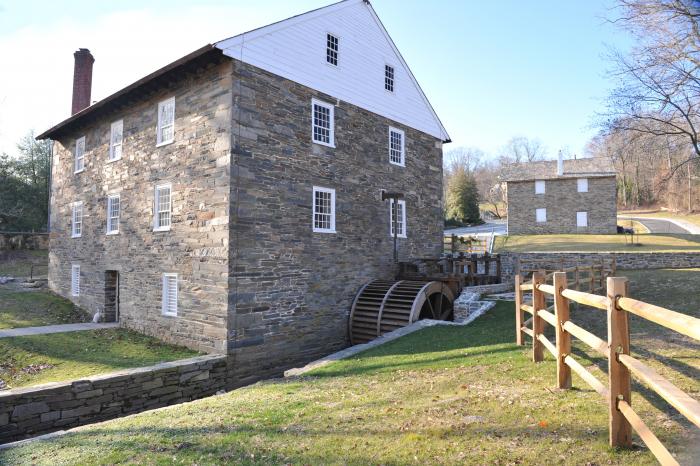
The latest rehabilitation of the mill and grounds took place in 2011 under a partnership between the Friends of Peirce Mill, a non-profit, volunteer-led group, and the National Park Service. The Friends of Peirce Mill funded the construction of the flume for delivering water to the new wheel, along with all of the shafts, gears, framing and flooring support systems required to operate the three run of newly-dressed millstones.
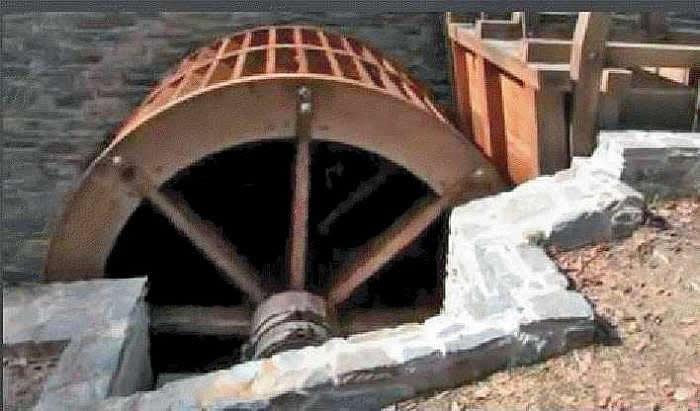
New Breastshot Water Wheel.The Friends have raised more than $1 million from foundations, families, and individuals to restore the milling machinery. The Obama Administration's American Recovery and Reinvestment Act (ARRA) provided $2 million to complete the work, allowing the mill to operate for the first time in almost two decades.
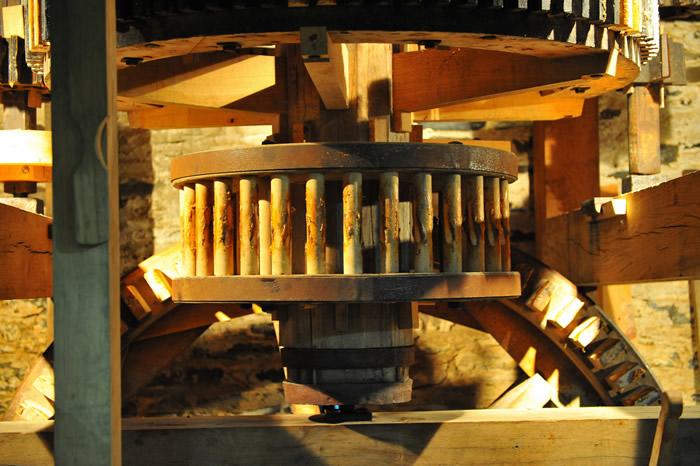
Close up of main gearing systems at Peirce Mill, with pit gear in background connects to outer waterwheel, vertical shaft in foreground holding wallower (center) and great spur (top), along with bridge trees and spindles for Stones #1 and #2 showing on far left and far right. Photo courtesy John H. Jennrich.
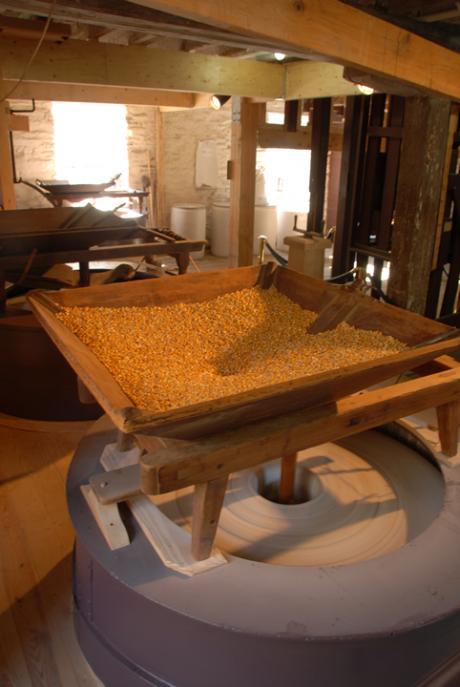
Photo of the Hurst frame area of Peirce Mill showing corn being run on Stone #1. GPS: 38' 56.41N, 77' 3.1W 75'/23 meters Washington West Quadrangle
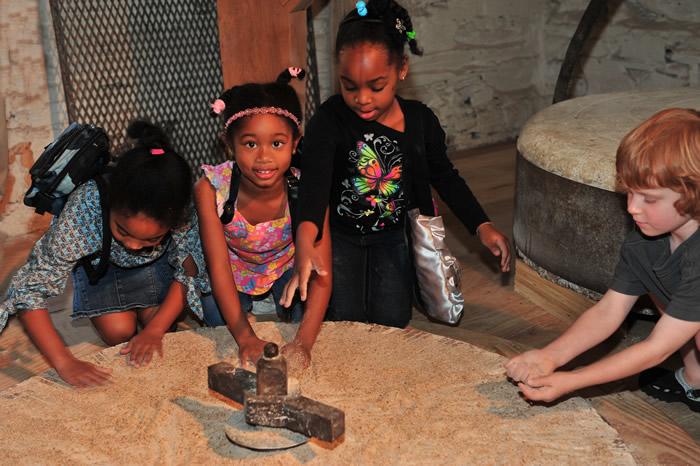
Young visitors get some “hands-on” experience with a bit of wheat and flour left on the bed-stone when Stone #3 was lifted for cleaning. The Friends of Peirce Mill are now working with the National Park Service and Rock Creek Park staff to offer an educational program so visitors of all ages can learn about the early history of milling in our nation’s capital and experience the sights and sounds of an operating gristmill. Photo Courtesy of John H. Jennrich

A 1900 photo from the negative of Shoemaker's Mill, a.k.a. Pearce Mill. This photo was taken just a couple of years after the mill broke down. The mill, from 1876 to 1897 when it was broken down, was powered by a Leffel Water Turbine. To accommodate the operation of the mill by the turbine the millstones were raised to create a platform, and the less overhead room caused a problem in lifting and turning over the runner millstones for dressing.
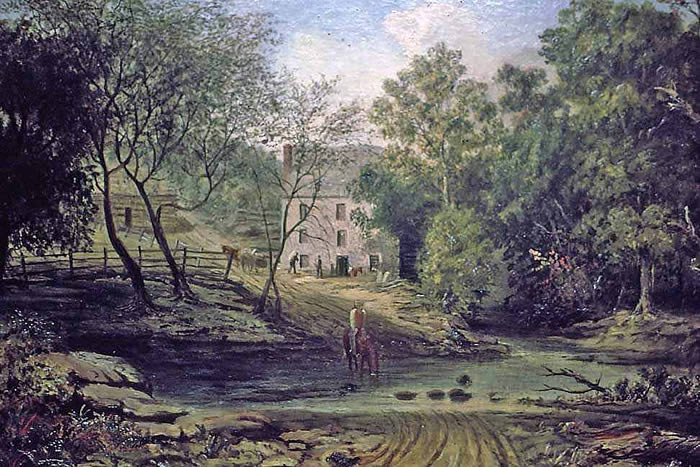
An 1830 painting of the Peirce Mill. The painting authenticated by the Corcoran Museum in Washington, D.C. The anonymous painting was painted in 1830. It was painted by someone who was trained in Pittsburgh, Pennsylvania. The painting is oil on canvas. You can see the original breast shot water wheel at the right side of the mill between the trees.